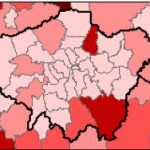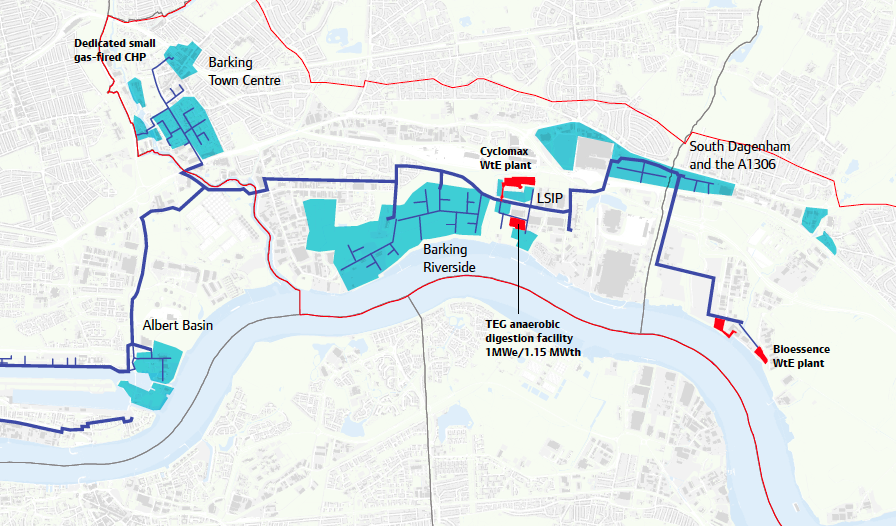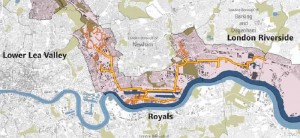Site search:
-
What’s new?
Energy for London Tags
Brent Buildings Camden Carbon Emissions CHP Cities Climate Adaptation Community Heating Community Initiatives Croydon Data DECC Decentralised Energy Distribution ECO Energy Costs Energy Efficiency Enfield FIT Fuel Poverty Funding Green Deal Hackney Haringey Housing Islington Lambeth Library Local Authorities Mayor Newham Ofgem Olympics Photovoltaics Planning RE:FIT RE:NEW Renewable Energy Retrofit Southwark Tower Hamlets Transport Waltham Forest Waste WestminsterEnergy Archives:
- February 2021 (1)
- January 2021 (15)
- December 2020 (15)
- November 2020 (9)
- October 2020 (3)
- August 2020 (5)
- July 2020 (3)
- June 2020 (4)
- April 2020 (10)
- March 2020 (5)
- February 2020 (2)
- January 2020 (3)
- October 2019 (1)
- September 2019 (4)
- August 2019 (2)
- July 2019 (1)
- August 2018 (1)
- November 2016 (8)
- October 2016 (8)
- September 2016 (2)
- August 2016 (8)
- July 2016 (14)
- April 2016 (12)
- March 2016 (16)
- February 2016 (8)
- January 2016 (4)
- December 2015 (1)
- November 2015 (1)
- October 2015 (16)
- September 2015 (3)
- June 2015 (1)
- May 2015 (1)
- April 2015 (1)
- March 2015 (1)
- February 2015 (1)
- January 2015 (1)
- December 2014 (18)
- November 2014 (4)
- August 2014 (8)
- July 2014 (7)
- June 2014 (25)
- May 2014 (8)
- April 2014 (4)
- March 2014 (12)
- February 2014 (7)
- January 2014 (13)
- December 2013 (11)
- November 2013 (15)
- October 2013 (15)
- September 2013 (18)
- August 2013 (5)
- July 2013 (20)
- June 2013 (33)
- May 2013 (8)
- April 2013 (16)
- March 2013 (25)
- February 2013 (14)
- January 2013 (20)
- December 2012 (23)
- November 2012 (23)
- October 2012 (25)
- September 2012 (14)
- July 2012 (12)
- June 2012 (43)
- May 2012 (20)
- April 2012 (8)
- March 2012 (40)
- February 2012 (39)
- January 2012 (40)
- December 2011 (22)
- November 2011 (40)
- October 2011 (33)
- September 2011 (48)
- August 2011 (40)
- July 2011 (58)
- June 2011 (41)
- May 2011 (80)
- April 2011 (38)
- March 2011 (33)
- February 2011 (25)
- January 2011 (24)
- December 2010 (3)
- November 2010 (7)
- October 2010 (6)
- September 2010 (7)
- August 2010 (1)
- July 2010 (2)
- June 2010 (4)
- May 2010 (1)
- March 2010 (3)
- February 2010 (3)
- December 2009 (5)
- November 2009 (2)
- October 2009 (3)
- July 2009 (3)
- June 2009 (1)
- April 2009 (1)
- March 2009 (1)
- February 2009 (1)
- January 2009 (1)
- December 2008 (2)
- October 2008 (1)
- September 2008 (1)
- July 2008 (1)
- March 2008 (2)
- January 2008 (2)
- October 2007 (1)
- September 2007 (3)
- July 2007 (1)
- March 2007 (1)
- February 2007 (3)
- November 2006 (3)
- August 2006 (1)
- February 2006 (1)
- May 2005 (1)
- February 2004 (1)
Tag Archives: Havering
London City Airport Draft Masterplan and Climate Change
September 2019:The Chief Executive’s foreword to the London City Airport’s Draft Masterplan, currently out for consultation, commits the organisation to the following: “We will become a carbon neutral business by 2020 and fully support and welcome the Government’s recent commitments to achieve net zero emissions by 2050. Our ambition is to be at the forefront of this agenda, and we will achieve these 2050 targets by employing the latest technology and innovation and working with our airlines and partners to help the achieve these goals too.”
The Masterplan’s Sustainability Strategy sets out that on ‘Carbon and Climate Change’ the airport’s plans are to:
- Become an independently accredited ‘carbon neutral’ business by 2020;
- Work with airlines to deliver more new generation aircraft which are more fuel efficient and will emit fewer carbon emissions per passenger per flight;
- Achieve net zero emissions by 2050, consistent with the emerging
- commitments from governments and industry around the world;
- Invest more in low carbon technology and more energy efficient buildings;
- Promote increased public and sustainable transport usage by staff and passengers;
- Work with airlines and manufacturers on the hybrid and electric
- aircraft agenda; and
- Work with NATS to deliver their predicted annual savings in fuel burn and CO2 emissions through participation in the Government’s airspace modernisation process.
However, as pointed out by HACAN (Heathrow Association for the Control of Aircraft Noise), London City Airport has admitted that it does not know as yet the impact on climate change emissions of their expansion proposals.
London City Airport GHG Emissions
September 2019: Helpful press release from HACAN (Heathrow Association for the Control of Aircraft Noise) stating that London City Airport has admitted that it does not know the impact on climate change emissions of the expansion proposals outlined in its draft Master Plan currently out for consultation. A technical note on ‘carbon and GHG emissions’ sets out that:
“It is not possible at this time to calculate total emissions which might arise from the draft Master Plan because this relies upon the accurate quantification of GHG emissions using detailed modelling and data from a combination of aircraft forecasts, fleet mix composition, construction and engineering designs, energy supply, and other details of the proposed future infrastructure. However, during the Master Plan period up to 2035, it can be expected that further improvements in aircraft fuel efficiency and emissions will take place as greater numbers of ‘new generation’ aircraft such as the Airbus A220-100 are introduced to the fleet. Moreover, the airport is predicted to accommodate an approximate 69% increase in passengers by 2035 (i.e. from 6.5 to 11 million passengers per annum) coupled with only a 36% increase in flights (i.e. from the 111,000 ATMs to 151,000 ATMs) and with only limited additional infrastructure. As such, provisional analysis would suggest that carbon emissions per passenger will decrease even further over the Master Plan period. 2.29 Should a detailed proposal come forward in the future, the airport would need to assess the total GHG emissions of that proposal as part of an Environmental Impact Assessment (EIA)”.
This issue will continue to be scrutinised as London City Airport continues with its planning application.
Havering Council could switch to solar energy with panels in Upminster and Harold Hill
7 October 2016: Following on from an earlier post about Havering’s Solar Parks initiative – comes further news on the borough’s ambitions, with a press notice that Havering seeks to become London’s first solar powered Council. In addition to plans to build two solar parks, which could have the potential of generating £1m annual income, the councils is exploring the potential for residents to directly invest in a sustainable future for the borough through a solar financial investment fund. Further information on the following Romford Reader article and Havering Council’s website here.
Havering ‘Solar Parks’ Initiative
August 2016: Interesing press release from Havering issued earlier this week which stated that “Havering Council is looking to harness the power of the sun by developing solar parks on its own land to generate a significant extra income for the borough.“
“These solar parks will allow Havering to become the first borough in London to generate renewable energy on a large scale to make money, which would be used to protect and improve frontline services. Energy produced in this way is clean, sustainable and renewable.
“The land on which the solar parks will be constructed will be underused space that will result in few if any adverse effects on community usage. Once the solar park is past its useful life, the panels can be removed and the site will revert to its previous condition.”
A public consultation will be released by the council on the proposal sometime in the future.
Havering have supported solar for sometime with a range of rooftop projects across existing council buildings – and the council cites a “recent report by Greenpeace [which] placed Havering as having the second highest percentage of solar power generated by homeowners in London, with over 1100 solar panel systems installed on domestic roofs.”
Havering councillors did however turn down an application in December 2014 for a solar farm in the borough. The developer went to appeal – but national government also refused the application earlier this year.
The press release also mentions that “The proposed solar parks will also have a positive impact on local biodiversity for a range of plant and animal species, in particular broad leaved plants, grasses, wild flowers, butterflies, bees and birds. Part of the Council’s proposals would be to work with local beekeepers to promote healthy honeybee populations, as well as Britain’s rarer bumblebees, in and around the solar parks.” The National Solar Centre’s Biodiversity Guidance for Solar Developments provides further information on the ways in which solar projects can support local ecology.
Posted in Decentralised Energy, News, Renewable Energy
Tagged Havering, Photovoltaics
Leave a comment
London Energy Efficiency Programme Scrutinised
March 2014: The London Assembly Environment Committee held the first of two oral evidence sessions on progress made by the GLA’s energy and climate programmes. The first of these sessions was held on 6 February and focussed on the Mayor’s home energy efficiency programme, RE:NEW. Evidence was provided by representatives from a number of organisations, including EDF Energy, the Energy Saving Trust, Hillingdon Borough Council and the Mayor’s Housing Advisor. The full transcript can be accessed here – and a webcast can also be viewed here. Points of interest raised during the debate included:
- The RE:NEW programme is awaiting confirmation they they have been successful in their application to the European Investment Bank’s European Local Energy Assistance (ELENA) programme for £2.6m to put in place a support team over a three year period starting from April 2014 (the RE:NEW programme support team is currently operated for the GLA by Capita).
- RE:NEW is currently working with Greenwich, Havering, Newham and Westminster, Hyde Housing and Peabody Gallions developing “bigger projects that would be more attractive in terms of bringing in Energy Company Obligation (ECO) funding“.
- Borough responses suggested that RE:NEW was “not very hands-on with project development.” RE:NEW is keen to find out what boroughs are doing but “there is very little support there for boroughs in terms of developing projects and overcoming planning issues.“
- RE:NEW should be instead be focussing on what the GLA could do to “enhance [borough activities] even further if it wants to deliver ambitious carbon reduction targets“
- Further criticism was targeted at the RE:NEW programme stating that the funding resource was mainly going to Capita : “We see that the resources are actually on those people, basically, for the Capita resource. Local authorities are not really getting the benefit of that on the whole“.
- An often confusing debate takes place on how many homes were retrofitted through the RE:NEW programme and how many homes were insulated across London in total. A number of 400,000 homes is quoted by the Mayor’s Housing Advisor during the session. Though not explained, this number is most likely made up of the following: 327,00 treated through the Government’s CERT programme over the period April 2008 – December 2012 (see cell V35 of EST CERT data here), and 70,000 homes visited by the RE:NEW team and provided with ‘easy measures’ over the period July 2011-December 2012 (see MQ here for details). For more on this, see earlier post here.
- RE:NEW Phase 3 has a target of retrofitting 175,000 homes.
Just ahead of the evidence session – somewhat belatedly – the Mayor published the full evaluation report of the main RE:NEW roll-out phase which ran from July 2011-May 2012 (a summary report had previously been issued – details here). A second oral evidence session will take place on 26 March, focusing on the Mayor’s decentralised energy programmes, with the Mayor’s energy advisor, Matthew Pencharz, in attendance.
Posted in Energy Efficiency, Library, News
Tagged ECO, Energy Efficiency, Greenwich, Havering, Hillingdon, Newham, RE:NEW, Westminster
Leave a comment
Waltham Forest has highest number of PV installations of any London borough
 24 October 2012: A recent post provided some regional detail of the uptake of Feed in Tariff (FITs) generators – predominantly photovoltaics (PVs) – across the UK (at the English regions and devolved administrations level). DECC have today released an updated spreadsheet providing a breakdown on the number of installations at local authority and parliamentary constituency level. This highlights that:
24 October 2012: A recent post provided some regional detail of the uptake of Feed in Tariff (FITs) generators – predominantly photovoltaics (PVs) – across the UK (at the English regions and devolved administrations level). DECC have today released an updated spreadsheet providing a breakdown on the number of installations at local authority and parliamentary constituency level. This highlights that:
- London’s suburbs do the best in relation to PVs installed with Waltham Forest having the highest number of installs of all London boroughs (701); then Bromley (666), Croydon (525) and Havering (440).
- The parliamentary constituency of Walthamstow has accordingly the highest number of PV installations of any constituency in London (373). [For context, Tiverton in Devon has the highest number of installations of any UK constituency – 2,456]
- Unfortunately installed capacity (ie kWe of generation) by local authority/constituency is not available – which would be a more helpful metric (it is included available on a per installation basis in Ofgem’s comprehensive FIT spreadsheet (370k+ entries) – the latest of which was published a few weeks ago – and which Energy for London is currently going through and will report on shortly).
- A not very helpful map is also provided by DECC today of Number of domestic photovoltaic installations by Local Authority, as at end of September 2012
In addition to the direct link here the spreadsheet can also be downloaded from the following DECC FITs webpage (the file is called ‘Sub-regional Feed-in Tariffs confirmed on the CFR statistics‘).
Posted in Data Store, News
Tagged Bromley, Croydon, Data, FIT, Havering, Photovoltaics, Waltham Forest
Leave a comment
Case Studies on new PV systems in London
4 November 2011: Brief case studies of three new public sector buildings installing PV:
Woolwich Civic Offices
Elm Park Library in Havering, and
Wembley’s Chalkhill Primary School
London schemes through to the next round of ‘energyshare’
12 August 2011: British Gas and River Cottage’s energyshare initiative have today announced the ‘longlist’ of 100 community renewable energy projects bidding for support from the initial £500,000 energyshare fund. Only seven London schemes are in this list of 100 projects and links to their project descriptions can be found below:
Ham Hydro – the installation of hydro power turbines on the River Thames at Teddington Weir
PETRA – green refurbishment of tower blocks to best practice standards of energy and water efficiency and generate renewable energy
SPACE_Solar – the installation of a large solar array on a new artist studio building in Peckham
All Souls Solar – installation of a solar array on All Souls Church in St Margarets, Isleworth
Glyndon Community – a scheme to make part of Plumstead-based Glyndon community centre’s energy consumpution come from renewable sources
Hackney City Farm
Hyde Farm Climate Action Network – Supporting ongoing energy saving projects on the Hyde Farm estate in Balham.
Further funding of £2m will be supplied for future bidding rounds by British Gas – much more information on energyshare can be found on their website.
Posted in News
Tagged Greenwich, Hackney, Havering, Hounslow, Lambeth, Renewable Energy, Richmond, Southwark
Leave a comment
Havering
Havering Greenhouse Gas Report 2012 January 2013
Havering Fuel Poverty Strategy August 2012
Havering Climate Change Action Plan March 2009
Havering Sustainable Energy webpage December 2006



